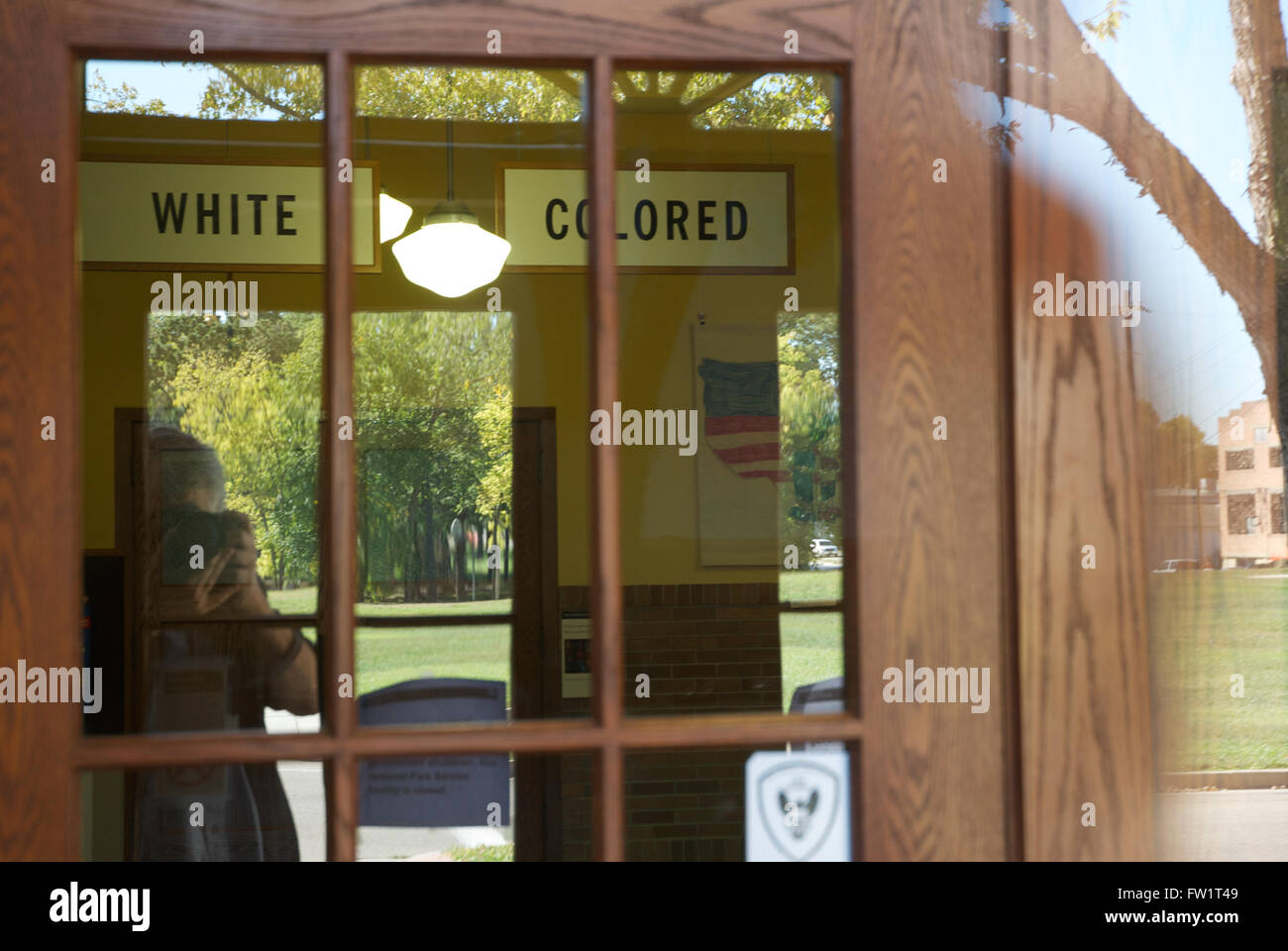Topeka, Kansas, USA, 5th March, 2014 The Monroe School historic site of Brown v Board of Education, what is considered the start of the Civil rights movement in the United States. Brown v. Board of Education, 347 U.S. 483 (1954), was a landmark United States Supreme Court case in which the Court declared state laws establishing separate public schools for black and white students unconstitutional. The decision overturned the Plessy v. Ferguson decision of 1896, which allowed state-sponsored segregation, insofar as it applied to public education. Credit: Mark Reinstein

Image details
Contributor:
mark reinstein / Alamy Stock PhotoImage ID:
FW1T49File size:
28.7 MB (787.3 KB Compressed download)Releases:
Model - no | Property - noDo I need a release?Dimensions:
3872 x 2592 px | 32.8 x 21.9 cm | 12.9 x 8.6 inches | 300dpiDate taken:
5 March 2014Location:
Topeka, Shawnee County, Kansas, USA,More information:
This image could have imperfections as it’s either historical or reportage.
Topeka, Kansas 3-5-2014 The Monroe School historic site of Brown v Board of Education, what is considered the start of the Civil rights movenment in the United States. Brown v. Board of Education, 347 U.S. 483 (1954), was a landmark United States Supreme Court case in which the Court declared state laws establishing separate public schools for black and white students unconstitutional. The decision overturned the Plessy v. Ferguson decision of 1896, which allowed state-sponsored segregation, insofar as it applied to public education. Handed down on May 17, 1954, the Warren Court's unanimous (9–0) decision stated that "separate educational facilities are inherently unequal." As a result, de jure racial segregation was ruled a violation of the Equal Protection Clause of the Fourteenth Amendment of the United States Constitution. This ruling paved the way for integration and was a major victory of the civil rights movement. For much of the sixty years preceding the Brown case, race relations in the U.S. had been dominated by racial segregation. This policy had been endorsed in 1896 by the United States Supreme Court case of Plessy v. Ferguson, which held that as long as the separate facilities for the separate races were equal, segregation did not violate the Fourteenth Amendment ("no State shall... deny to any person... the equal protection of the laws."). The plaintiffs in Brown asserted that this system of racial separation, while masquerading as providing separate but equal treatment of both white and black Americans, instead perpetuated inferior accommodations, services, and treatment for black Americans. Racial segregation in education varied widely from the 17 states that required racial segregation to the 16 that prohibited it. Brown was influenced by UNESCO's 1950 Statement, signed by a wide variety of internationally renowned scholars, titled The Race Question. This declaration denounced previous attempts at scientifically justifying racism as well as morally